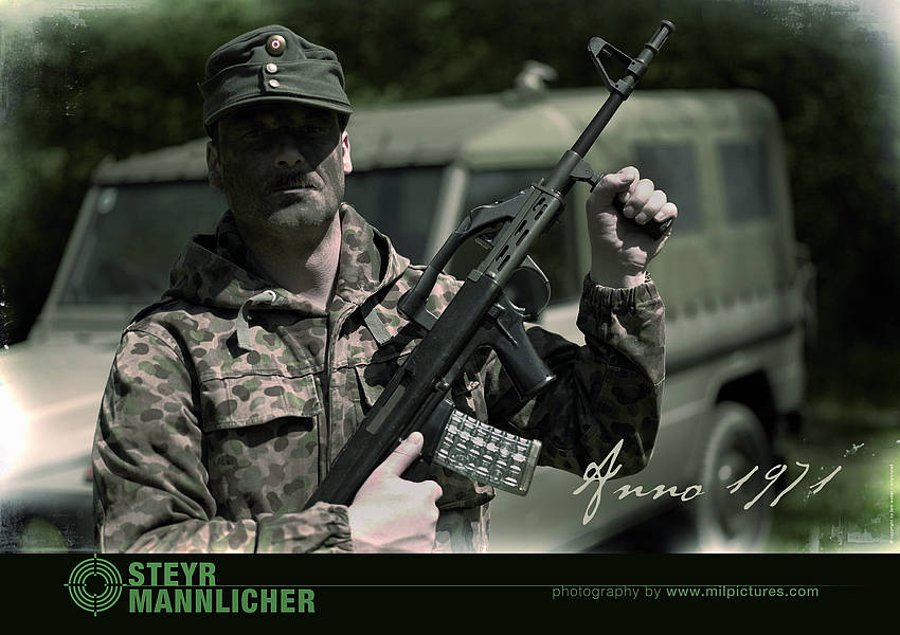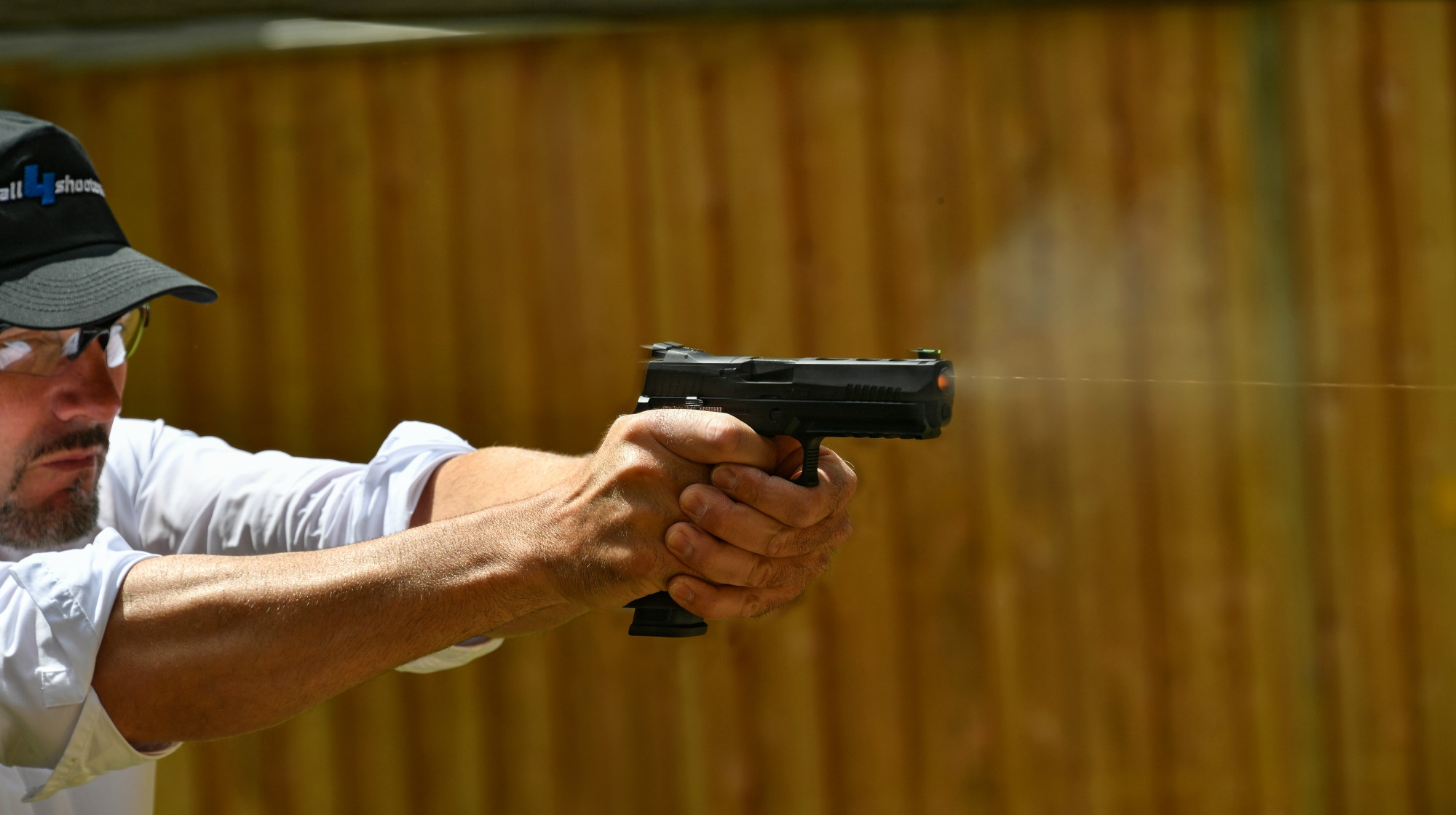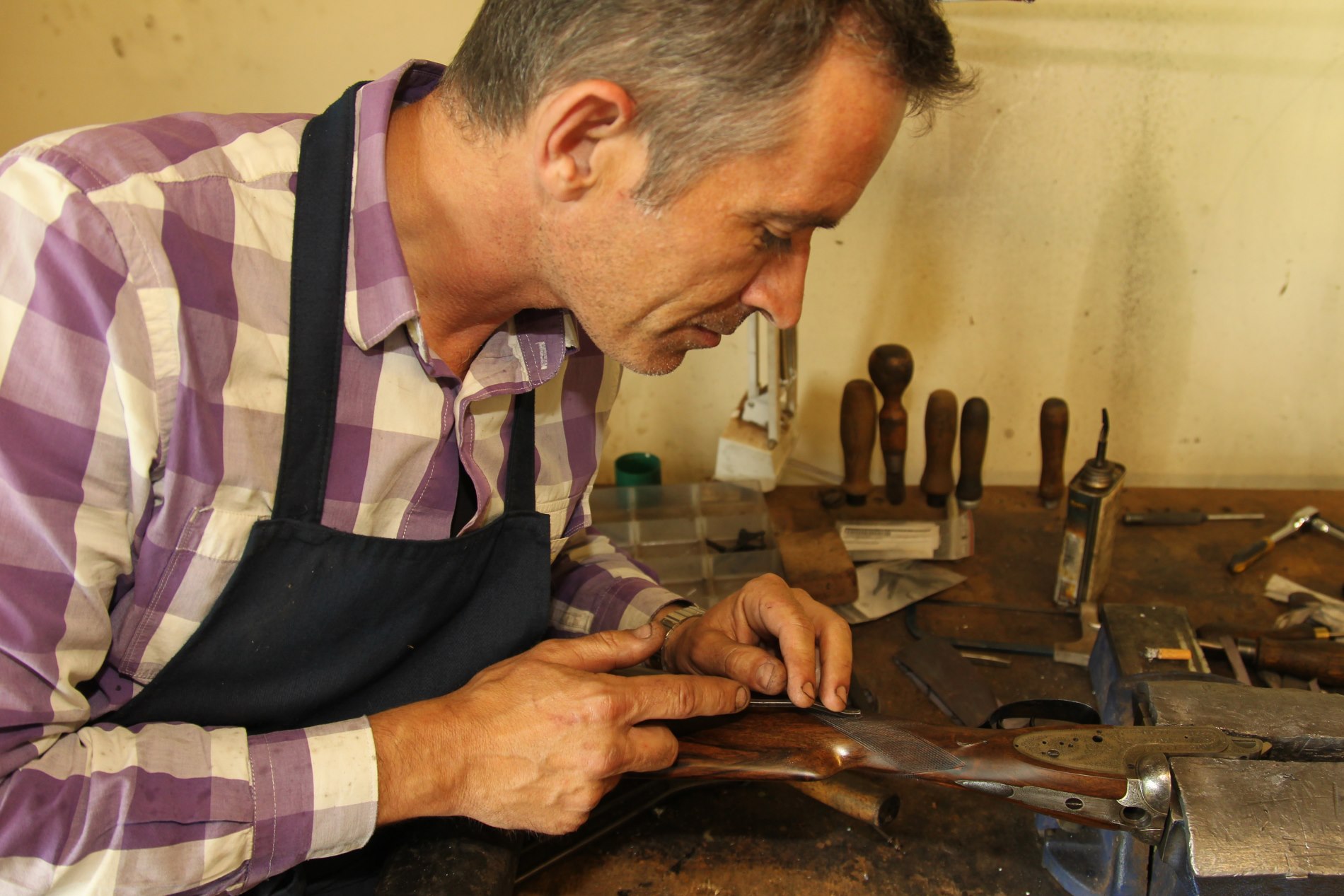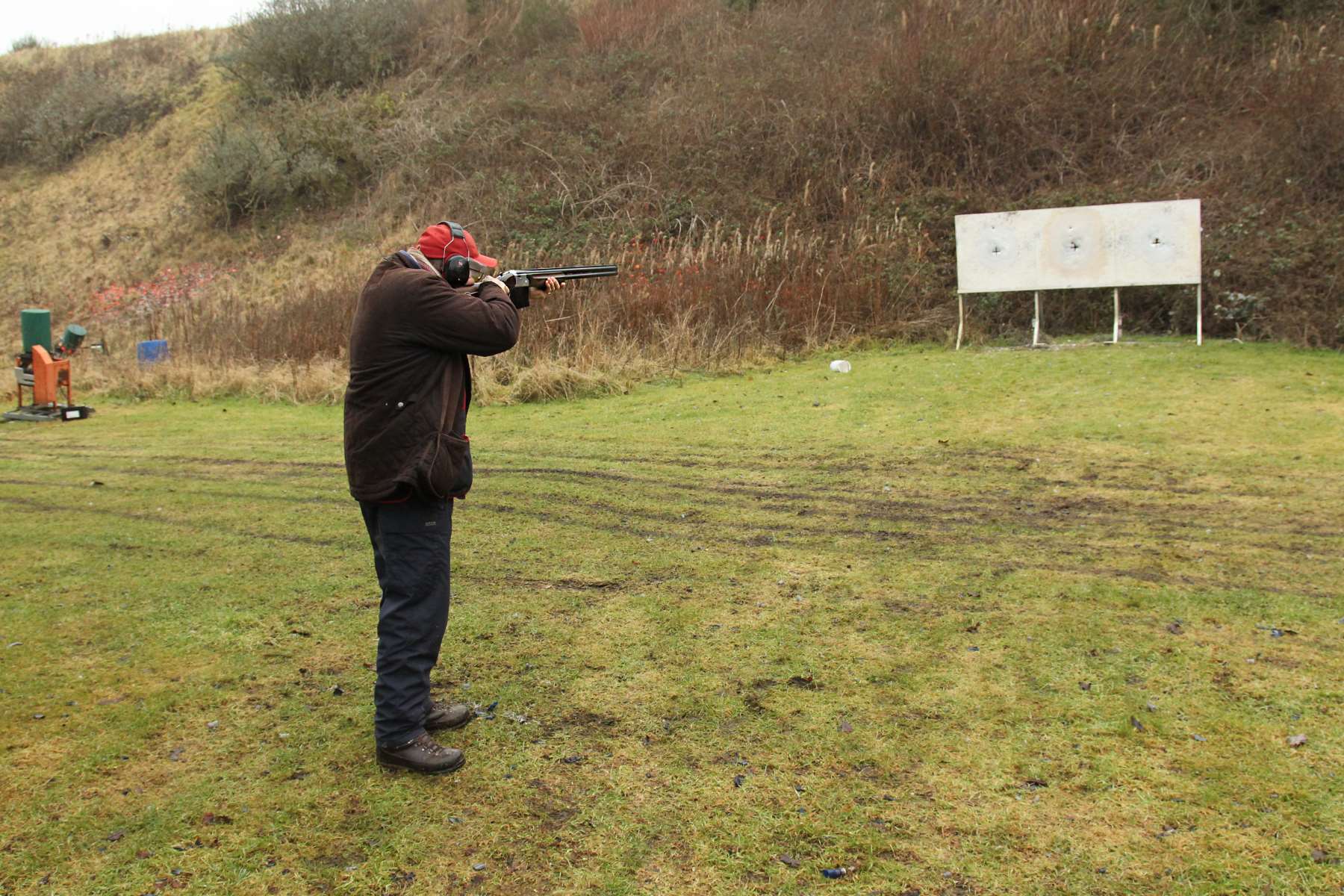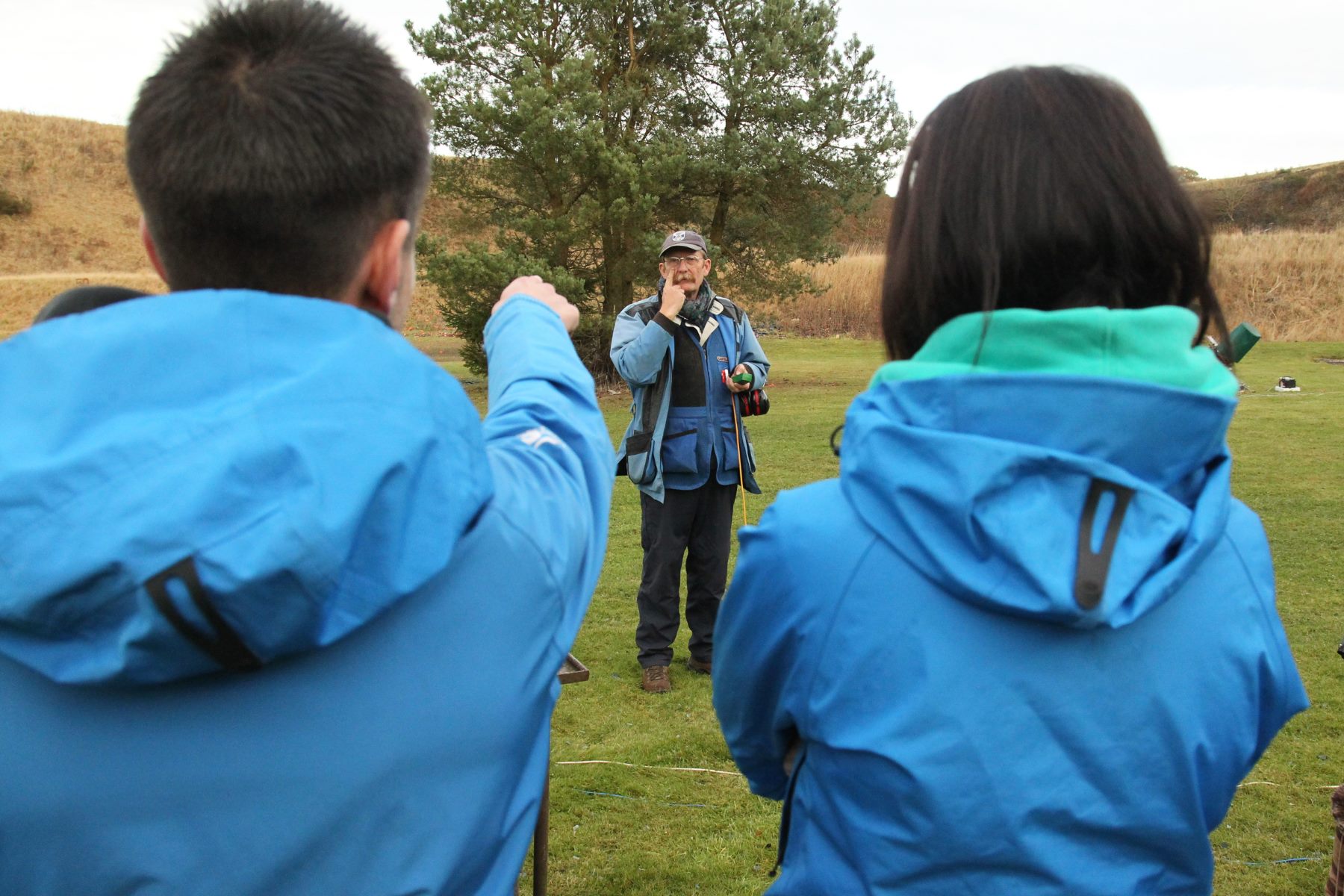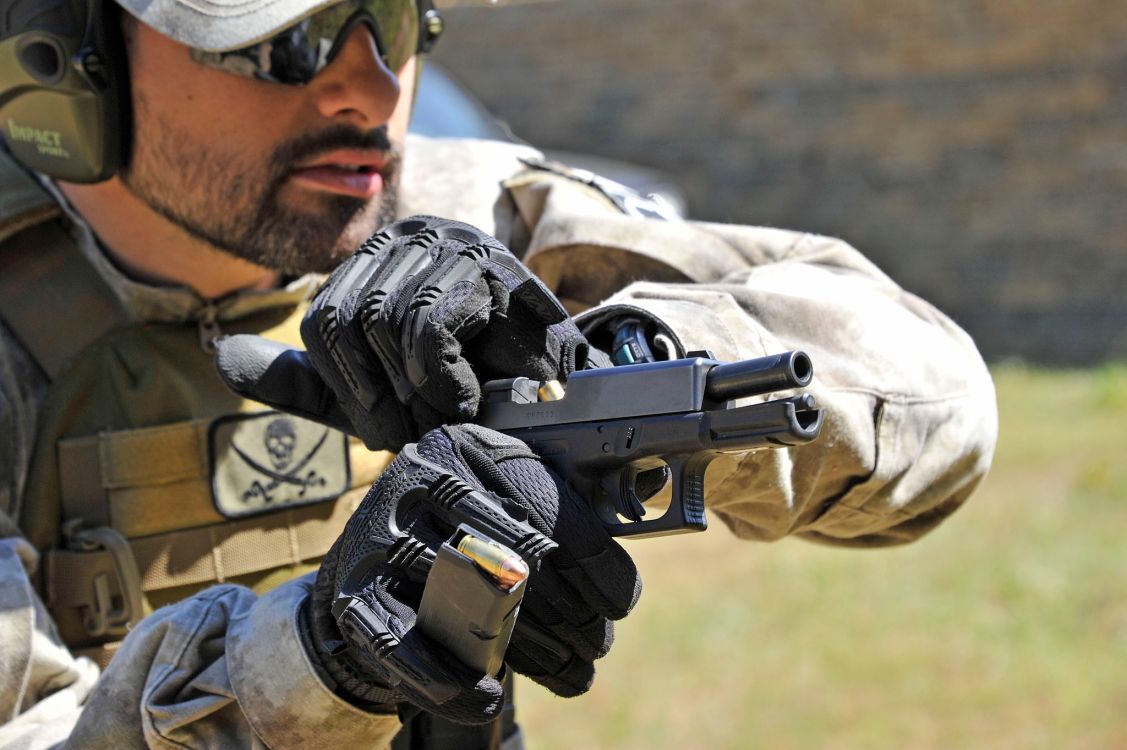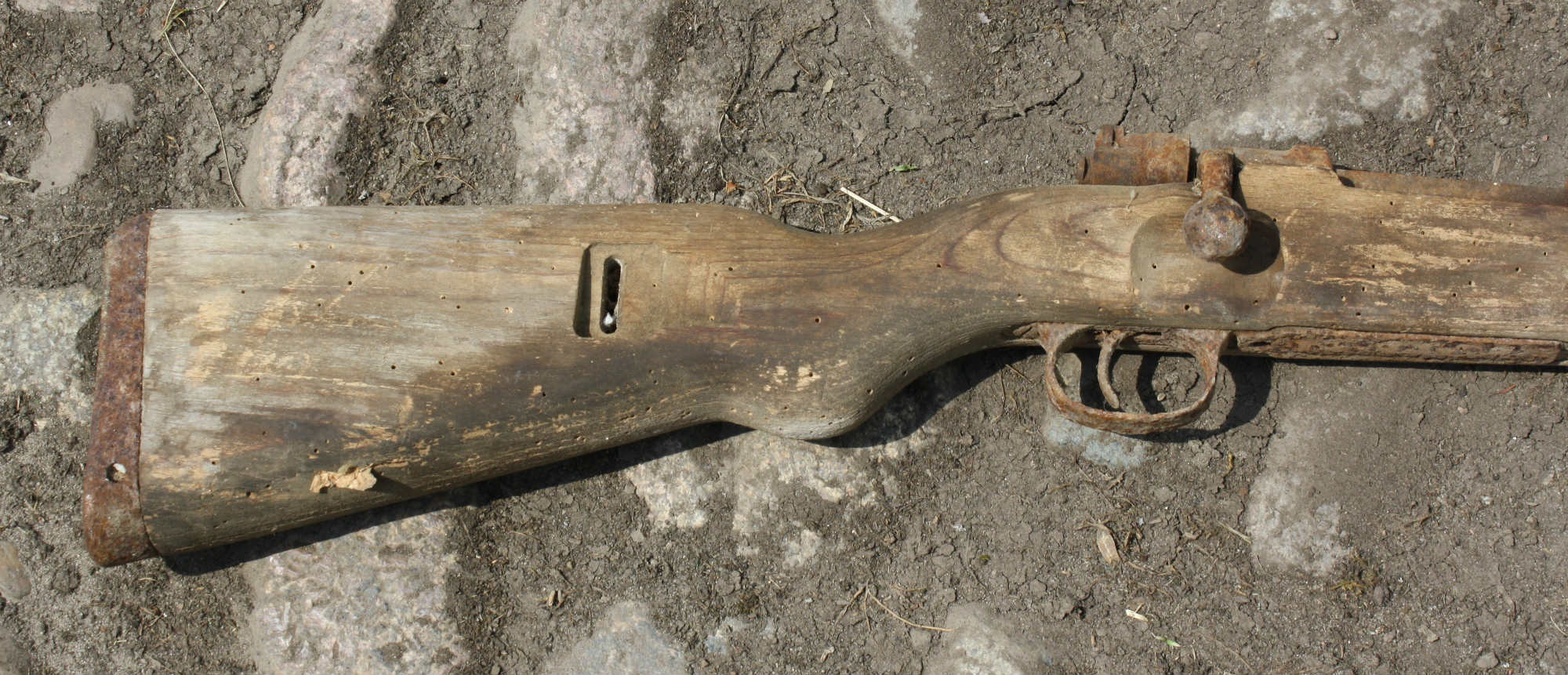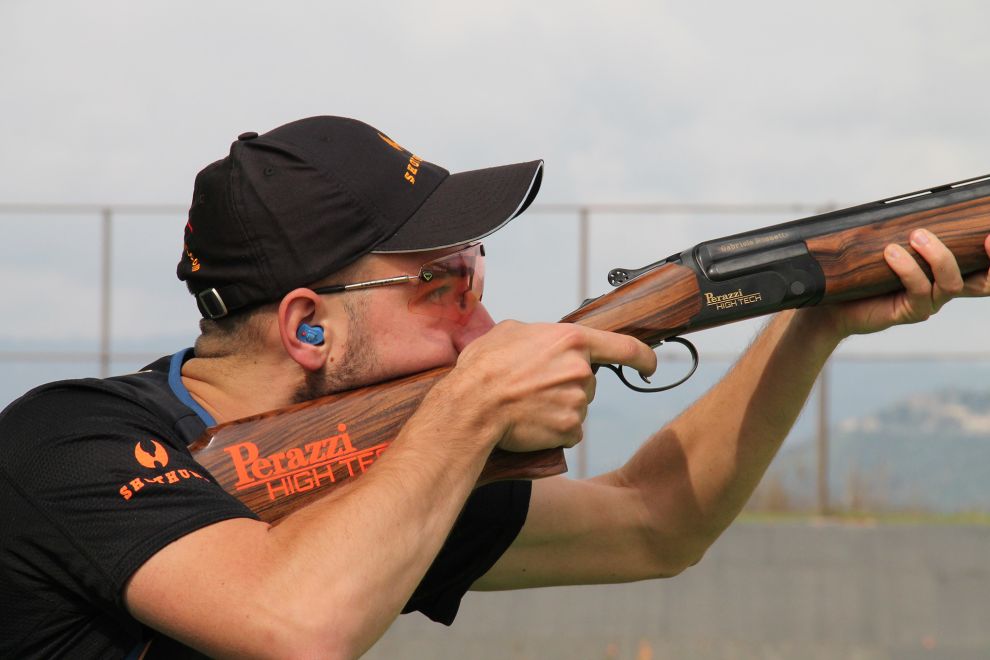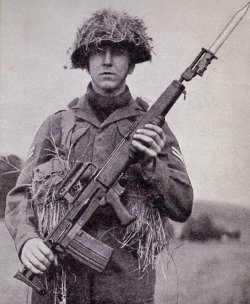
In our previous article, we briefly examined the history of the earliest bullpup small arms designs, from the Thorneycroft and Godsal rifles of 1902 up to the British and American developments of late World War II. Here, we will discuss a second stage of evolution of bullpup rifles, stemming from the end of World War II to the early 1970s, just before the official adoption of the two very first mass-produced bullpup rifles – the Austrian Steyr AUG and the French FAMAS.
As we discussed before, towards the end of WW2 British engineers were deeply engaged in the development of bullpup rifles, either manually-operated, semi-automatic or fully-automatic. It was clear how the British Army was indeed in need for a more modern rifle that would replace its obsolete Lee-Enfield SMLE bolt-action service rifles.
British engineers thus started to develop a new cartridge, a cleverly designed intermediate round that would be effective up to 600 yards (roughly 550 metres) in an infantry rifle and up to 1000 yards (about 900 metres) in an universal machine gun, while at the same time remaining noticeably lighter and generating less recoil than any of the existing service rifle rounds used by the Allied forces of World War II (.303 British, .30-06 Springfield, 7.62x54R).
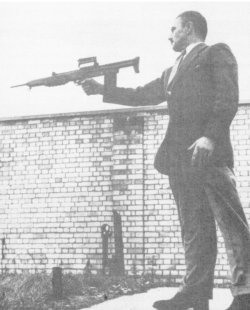
With the new 7x43mm round at hand, the British Army literally jump-started the development of a new rifle. At least three domestic teams participated in the race – two from the Royal Small Arms Factories (lead by Stanley Thorpe and Stefan Kenneth Janson) and one from a privately-owned gun-making company, the legendary BSA Ltd., or “Birmingham Small Arms”.
Of all the designs submitted of the competition, only the BSA prototype sported a conventional layout; the other two prototypes – dubbed the EM-1 “Cobra” and the EM-2 “Mamba” – were bullpups.
The EM-1 rifle, designed by the team led by Stanley Thorpe, heavily borrowed from the German developments dating to late World War II: it used many stamped steel components and was based on a roller-locking, gas operated system that was inspired from the Mauser STg.45 prototype.
The EM-2, designed by Stefan Janson's team, was produced through the use of more traditional technologies and featured a flapper-locking, gas-operated action similar to that used on the unsuccessful German G.41(W) semi-automatic rifle or on the well-known Soviet RPD light machine-gun.

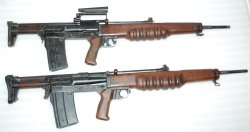
The EM-2 proved to be the most successful of the three submitted designs, and in 1951 it went as far as being officially adopted for British service as “Rifle, Automatic, caliber .280, Number 9 Mark 1”. However, with the changes in the British government this decision was reversed in sake of maintaining caliber compatibility with the U.S. Armed Forces and with the newly-established NATO.
Later on, attempts were made to convert EM-2 rifle to the new American “7.62mm T65 light rifle ammunition”, which later was adopted as 7.62x51mm NATO. For some reasons, this conversion proved to be unsuccessful, and in around 1955 British army adopted the traditionally-designed Belgian FN FAL rifle, locally manufactured as the “7.62mm L1A1 SLR” rifle.
For the sake of our treatise, it's worth taking note that some early prototypes of the FN FAL rifle were chambered for the British 7x43mm intermediate cartridge, and one of those was a bullpup design. The 7mm bullpup FAL rifles were widely tested worldwide in the early 1950s, but appealed no customer; as a result, production versions of this highly successful rifle were all confined to the traditional layout.


While British and Belgian bullpups of the early post-WW2 period are well known, similar Soviet developments of the same era are quite obscure. Soviet designers experimented with bullpup-configured antitank rifles before WW2, but none of these was ever adopted.
However, during the early stages of development of a intermediate caliber for small arms (the 7.62x39mm M43 that became famous as the main chambering for the AK-47 and AKM rifles) the Soviet army tested several assault rifles in a bullpup layout.
One of the earliest Soviet bullpup assault rifles was designed by Sergey Aleksandrovich Korovin at the Tula Arms Plant (TOZ), and submitted to military trials in 1945. It was a somewhat roughly looking design, with an annular gas piston and a rotary bolt locking.
The reasons for its rejection aren't known, but about one or two years later a new bul-pup rifle design was submitted to the next stage of trials for the adoption of a new Soviet service weapon system – this time, designed by the talented but somewhat unlucky designer Gennady Aleksandrovich Korobov, another TOZ employee.


Dubbed as TKB-408, the gas-operated, locked-breech, tilting bolt rifle was more or less on par with the British developments of the same time. One prominent feature of the TKB-408 was the magazine catch, located right under the pistol grip – which required the use of special magazines. Just like all other contenders, the TKB-408 lost the trials to the famous AK-47 assault rifle, a traditional layout by Mikhail Timofe'evich Kalashnikov, which was officially adopted as the new Soviet service rifle in 1949.
In the late '40s, American engineers were also engaged in the development of a new generation of rifles – lightweight, selective-fire service weapons that would fire a new, lighter but still powerful .30-caliber/7,62mm ammunition.
Among many experimental weapons – bearing various “T”-index denominations ranging between T20 and T48 – the T31 prototype deserves our attention: developed around 1949 by John Cantius Garand (the designer of the M1 service rifle used by the U.S. Forces during World War II), this slender rifle was based on a gas operated system and featured a ring-shaped gas piston. Although briefly tested, the Garand T31 bullpup rifle never passed the experimental prototype stage.
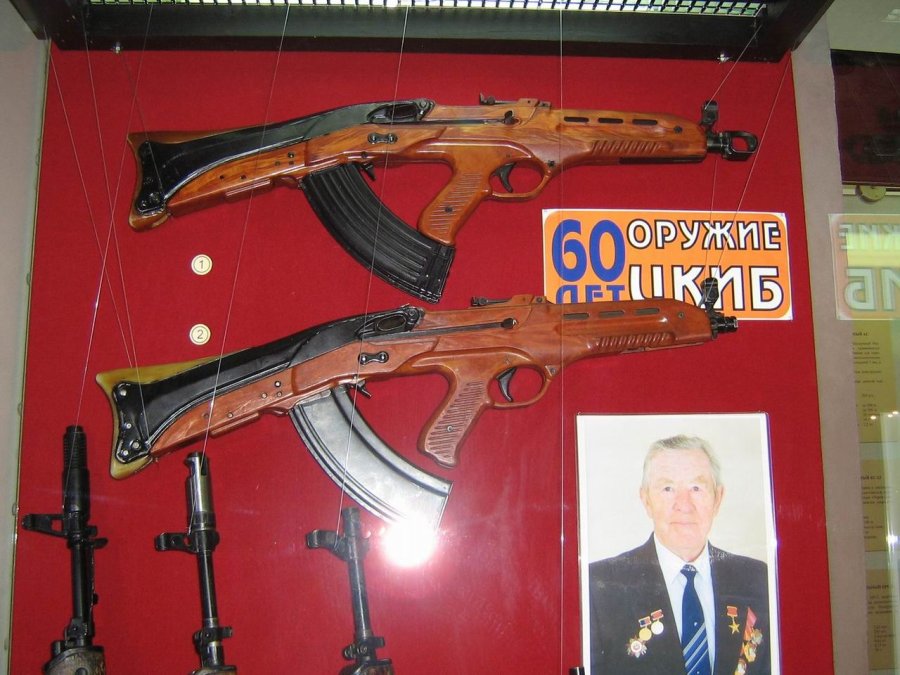
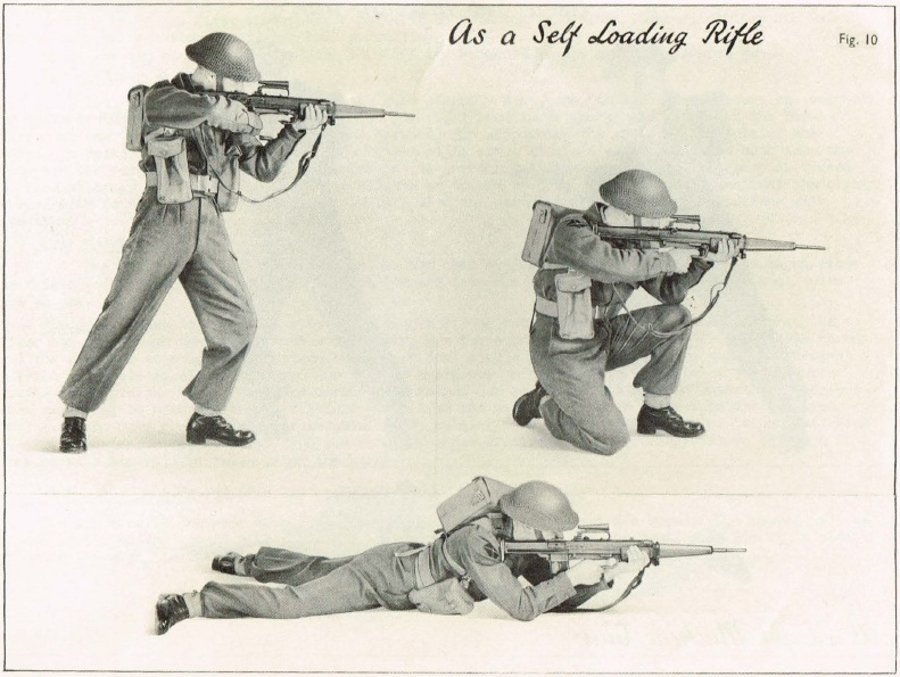


In the 1950s, a good deal of bullpup development was carried on in France as local firearm manufacturers competed to develop a new automatic rifle that would replace the somewhat obsolescent MAS-49 rifle within the French Armed Forces.
It's worth noting how several designs were developed simultaneously in traditional and bullpup layouts.
The State-run Mulhouse Mechanical Plant (AME), Saint-Étienne Arms Factory (MAS) and Tulle Arms Factory (MAT) all came out with bullpup rifle prototypes, but apparently none of them performed satisfactorily on trials, and in the year 1956 the French Ministry of Defense settled on the adoption of the rather conservative, traditional MAS 49/56.
By the late 1950s, of the NATO and Warsaw Pact armies had adopted infantry rifles of (then) new generation: for the NATO forces, these included 7,62x51mm caliber battle rifles such as the M14, the FN FAL, the Heckler & Koch G3 and the Beretta BM-59; for the Warsaw Pact forces, the Soviet AK and SKS designs – chambered for the less powerful but nonetheless highly performing 7.62x39mm round – became mainstream, while Czechoslovakia ran its own side show with the indigenous, but nonetheless successful, SA Vz.58 rifle chambered for the same round.

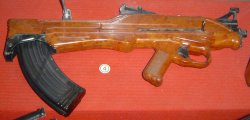
All of these weapons were of traditional layout, but work on bullpup designs continued. The main drive for the further development of bullpup rifles was set forth by the requirements of mechanized and airborne troops, which would ride to the battlefield in the confined spaces of APCs (armored personnel carriers) and helicopters. Folding or collapsible stocks on traditional rifles offered only a partial solution, while bullpup rifles offered “full-size” firepower in an overall noticeably shorter weapon.
Despite the relatively compact size of the Soviet Kalashnikov AK and AKM rifles – and the existance of even more compact, folding-stock versions thereof, namely the AKS and AKMS rifles – several Soviet designers attempted to develop bullpup rifles chambered for the 7.62x39mm caliber. One of the most notable Soviet bullpup rifle designs of 1960s was the experimental TKB-022 model, another brainchild of Gennady Korobov, dating circa 1962.
This spectacular prototype featured a plastic chassis wrapped around a compact steel receiver (pre-dating the Steyr AUG of well over a decade!), a magazine mounted in an extreme rearward position, and last but not least, a forward ejection system for spent cases which allowed safe and easy operation by left-handed or right-handed shooters alike, or within the limited enclosure of an APC. To allow his gun to retain the maximum possible barrel length in such a short gun, Korobov implemented a vertically-sliding breechblock action, similar to the “falling block” of some of the earlier single-shot metallic cartridge rifles.
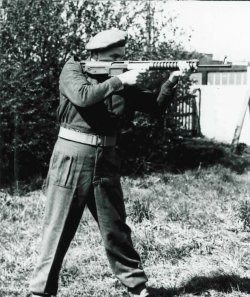
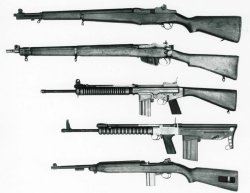
The extraction and ejection of spent cases, and the feeding of fresh rounds, was ensured through a U-shaped component connected to the gas piston. This allowed the magazine well (and thus the chamber) to be located in the rearmost possible position. Once extracted from the chamber, spent cases were cammed out of the barrel line and pushed forward through an ejection tube that ran towards the muzzle.
The TKB-022 rifle prototype went through several modifications and versions which spanned through most of the 1960s. The final version of the TKB-022 was chambered for then-experimental 5,6x39mm ammunition – which would later evolve into the 5,45x39mm M1974 cartridge and become the new standard service rifle round for most Warsaw Pact armies, used on AK-74 rifles and variants thereof – but the TKB-022 rifle itself never went past prototype stage.
The same Tula Arms Plant also came out with the 7,62x39mm caliber TKB-011 bullpup rifle, designed by Nikolay Mikhaylovich Afanasiev; developed around the same time as the TKB-022, using similar concept and materials – including brown-reddish plastics for its outer shell – the TKB-011 also featured a “safe” ejection pattern, with its ejection port located on the right side of the gun, pointing forward and to the right.
Like the Korobov design, the TKB-011 never went past the prototype stage, and today an experimental sample survives at the Tula arms museum.
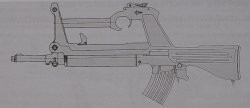
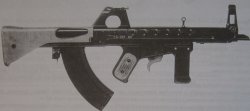
The interest in the then-unorthodox bullpup layout appears to have been quite common within Soviet small arms design bureaus back at the day. Alexander Konstantinov, a designer working at another one of these well-known entities – the Vladimir A. Degtyaryev Plant, headquartered in the city of Kovrov – designed several quite unusual bullpup rifles during all throughout the 1960s.
One of these, dubbed the SA-01, was submitted to factory tests in 1963: its main goal was to come out with a rifle that would be just as much controllable in off-hand full-auto shooting as possible. To achieve it, the SA-01 was designed as an “inverted bullpup”, with a pistol grip located above the receiver. This layout had to appear a little bit too radical, as in 1965 Konstantinov himself submitted a different design, dubbed the SA-001 – a “conventional bullpup” with the pistol grip and a foregrip below the barrel. Just like the TOZ prototypes, the Kovrov Plant's bullpup rifles never evolved beyond experimental stages.
The late 1960s also saw the development of bullpup rifle prototypes in the United States. Around these years, the U.S. Army sponsored the ambitious “Special Purpose Individual Weapon” (SPIW) program, which, despite its “special purpose” moniker, was intended to provide soldiers with “one gun does it all” weapon that combined a flechette-firing rifle and a multi-shot 40mm grenade launcher.

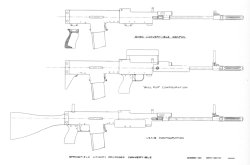
All throughout the SPIW program, the bullpup rifle designed by Springfield Arsenal established itself as one of the main contenders. The early versions of the Springfield SPIW rifle were especially interesting due to their modular design: a common receiver – hosting the barrel, the action and the magazine housing – could be easily converted from a conventional layout to bullpup and back again. However, it was soon clear that the SPIW rifle, when in a conventional layout, would be too long and unbalanced (too much frontwards weight, particularly when equipped with an underslung 40mm grenade launcher), and later prototypes were thus produced only as bullpups.
In its final form, the Springfield SPIW rifle was a long and edgy gun, equipped with an unusual “tandem” magazine that held sixty rounds of flechette-loaded ammunition. Due to the unrealistic requirements set in the SPIW program, and to a number of serious issues with flechette ammunition, no prototype developed within the program was ever put in production.
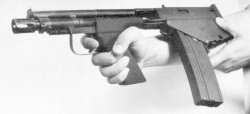
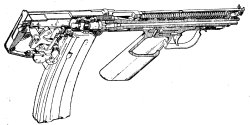
The last weapon to complete our round-up of the “Quarter century of bullpup experiments (1945-1970)” is another American prototype, known as “Individual Multipurpose Weapon” (IMP-221) or GUU-4/P, developed during late sixties by Dale Davis at the United States Air Force's Armament Laboratory.
Intended as a Personal Defense Weapon for air crews, this little gas-operated bullpup design in .221 Fireball caliber featured no shoulder stock, and was intended to be fired single-handed. To achieve ambidextrous handling, its pistol grip could be swung sideways to one or other side, placing magazine at an angle to the vertical plan in order to make way for the shooter’s arm.
Only few prototypes of IMP-221 were built by Colt, but the USAF quickly lost interest in the development, leaving U.S. Military pilots to rely on handguns as their primary defensive weapons, as of today and for the foreseeable future.
